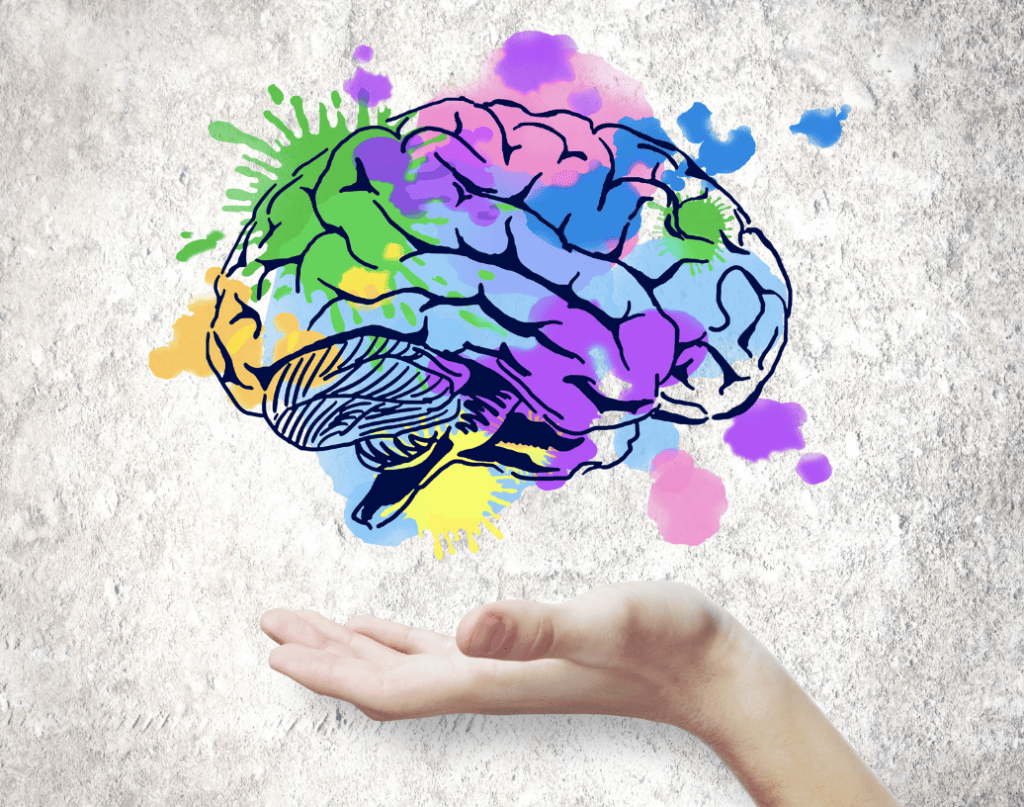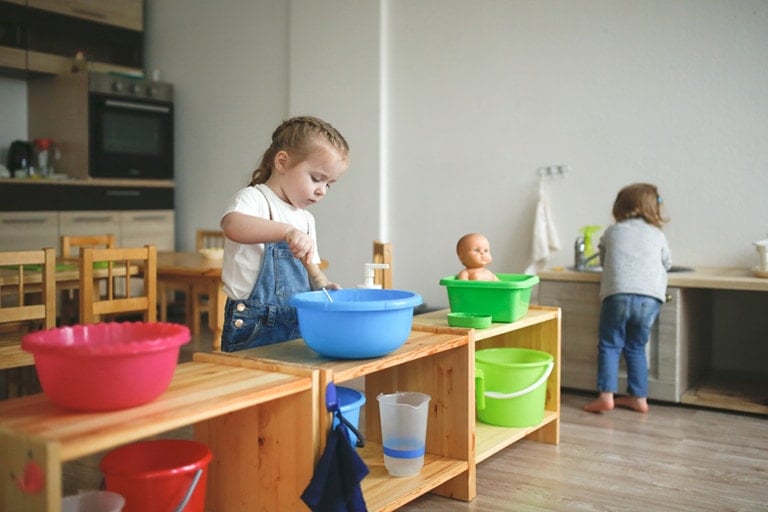Ever wondered why we never remember the first few years of our lives? Dr. Maria
According to Dr.
For long, people have underplayed the importance of the early years of children because of how little we remember from them and how little we know about them. After a lifetime worth of research and on-field observation, Dr.

What is the Absorbent Mind?
When a child is born, they are completely helpless and dependable. Throughout the first two years, in more or less fixed milestones, the child develops the faculty of language, learns to speak their native language more fluently than an adult would after years of conscious learning, learns to walk, and learns to communicate with others in meaningful ways. But how do they do it?
Many have falsely believed that it is the parents or caretakers that have the greatest influence on the skills that the child develops early on. Dr.
She found that children have a different nature than normal human beings, one that allows them to grow and adapt at a miraculously rapid rate.
“The child does not progress towards death like the adult; the child progresses towards life because the purpose of the child is the construction of man in the fullness of his strength and in the fullness of his life. When the adult arrives, the child is no longer. So the whole life of the child is a progress towards perfection, a progress of ever greater achievement.”
-The Absorbent Mind, (p. 42)
Most animals are born, from the onset, with bodies that are mostly equipped to survive in their immediate environments. They learn the basic faculties almost immediately and have all their fundamental organs and systems in place. Humans are not the same.
This is due to one special advantage that humans have over other animals—the ability to adapt to different environments. That is why Dr.
What is the Job of the Absorbent Mind?
The embryonic stage means that the human being is technically not born yet when a child is born. It is the child’s job to create that human being. The young child is the final phase of their creation. The child uses their special absorbent mind to survey the environment and uses the information they absorb in the final touches of their development.
This early collection of intelligence is evidenced by the size of a child’s head, which makes up from ¼ to 1/3 of their total body length (an adult’s head is just one-eighth of their body).
Dr.
The child, basically, is built for growth, for learning to absorb their environment and building him or herself in a way that adapts best to it. Their absorbent minds, which are also made for learning, help them with their task.
The young child relates to their environment differently. We can consciously admire an environment or remember it, but the child “absorbs it into himself.” S/he doesn’t remember what s/he experiences, but that is basically because “the child takes all these impressions not with his mind, but with his life.” They leave a lasting impression—they become a part of the child’s psyche.
A great example of this lies in language acquisition. A child neither remembers the sounds of their native language nor its structure, but they internalize the language so much they speak it better than anybody else, and a lot quicker and more efficiently than a conscious adult would.
What Are the Two Stages of the Absorbent Mind?
“He comes to life and begins his mysterious work and little by little he becomes the wonderful personality adapted to his time and to his environment. He builds his mind, until little by little he has constructed memory; until little by little he has constructed understanding, reasoning power; until little by little, he has arrived at his 6th year. Then suddenly we educators discover that this individual understands, that he has the patience to listen to what we say, whereas before we had no power to reach him. He lived on another plane, different from ours”
The Absorbent Mind (p. 38)
The period of high absorption and great sensitivity, when the child is hugely interested in learning about the world and has a great capacity to absorb information from his environment, lasts for about 6 years.
This period is divided into two stages, unconscious and conscious. The unconscious stage is from 0 to 3 years old, and it is when the absorbent mind is at its full force. The conscious stage is from 3 to 6 years old. It is when the child starts showing initiative and seeking independence in their learning.
During the first three years, the child tends to fully absorb their environment, which happens almost unconsciously. They are pulled by a natural, inner force that has its own timetable and can be assisted only indirectly. Walking and language acquisition happen during this stage.
During the second period, the child becomes somewhat conscious and starts realizing the environment through the work of their hands. The child still retains some of their absorbent mind, but now they consciously seek new experiences to build upon what they have learned in the first stage.
The child in the second stage tends to show a strong desire to be independent, and to master their environment on their own. They become interested in a variety of things that, although common among different children, can vary from person to person, unlike the first stage.
What Are Points of Sensitivity?
“Let us admit this. It is a fact. Why, however, amongst all the millions of different sounds and noises that surround him, does he hear just the voice of man? If it is true that the child hears, and if it is true that he takes only the language of human beings, it means that the human language must have made a great impression on the child. These impressions must be so strong, they must cause such an intensity of feeling and such a great enthusiasm as to set in motion invisible fibers within the body that begin to vibrate in order to reproduce those sounds.”
The Absorbent Mind (pp. 33-4)
The child’s “absorbent sensitivity” is not limitless. The child, during different phases in their development, develops specific sensitivities for things that contribute to the stage of growth they are in. These are called points of sensitivity.
“This point of sensitivity is so acute that it attracts the individual towards a certain set of actions”
The Absorbent Mind (p. 53)
Points of sensitivity are when a human organ, whether physical and psychological, is still being constructed. At those points, the whole child becomes attuned to certain things in their environment that help develop these organs, such as with language.
The child’s hearing, for example, is very weak and ineffective in the early periods of their lives. However, it is very attuned to human speech, to tone and language construction. This sensitivity point for language takes place from approximately 7 months of age to 3 years.
During this period, the child is attracted to speech. They are eager to listen, to be spoken to, and to communicate using sounds. Dr.
Any point of sensitivity is contingent on the neurological, physical, and psychological development of the child. Walking, for example, happens when the child has the bones and muscles for it, when their nervous system is developed enough, and when they have the inherent motivation to do it.
If a child is left without education, they will start walking during the point of sensitivity regardless. If an attempt is made to teach them walking before that period, they simply would not be able to do it. Dr.
How Can I Capitalize on the Absorbent Mind?
“The first problem of education is to furnish the child with an environment which will permit him to develop the functions that nature has given to him.”
The Absorbent Mind (p. 131)
Does this mean that there is nothing we can do to help young children on their intensive early path of growth? Quite the opposite!
What this means is that we need to learn about the child’s different periods of sensitivity, about the natural timetable of their absorbent mind, and to create an environment that maximizes the impressions they take in, both in terms of quality and quantity.
“Our work is not to teach, but to help the absorbent mind in its work of development.”
The Absorbent Mind (p. 38)
“Nature first makes the instruments and then develops them by means of functions, through experiences upon the environment.”
The Absorbent Mind (p. 130)
As organs and faculties start to develop in the child, they need exposure to enough experiences in order to develop normally—otherwise their creation becomes incomplete or distorted.
The key here is, when the child’s mind is eager for a certain activity or behavior, that the environment is ready with a great quantity of high-quality impressions that helps it on its particular and special task.
“The absorbent mind of the child orients itself in the environment; so it is necessary to prepare the environment with much care.”
The Absorbent Mind (p. 138)
We should remember to be very mindful about the impressions that we expose a child to in their early years, however. These impressions, due to their extremely powerful absorbent mind, would probably remain engraved as parts of their character and disposition.
The child’s environment during those formative years should always contain plenty of motives for interesting activity. They should serve as an invitation for the child to carry out their necessary expeditions—their experiences upon the environment.
“The environment for the baby-child must be the world, the world that is around him, all of it! If the child is to acquire language, he must be among people who speak, otherwise he will not be able to do so; if he is to acquire any powers or faculties he must be among people who habitually use those powers and faculties. If the child is to take in customs and habits he must be constantly among people who themselves follow them.”
The Absorbent Mind (p. 148)
When a child is in the sensitive period of language, for example, they should always be exposed to the speech of other people. Dr.
She explains how, when they are deeply interested in speech, children should be spoken to a lot of it. They should be actively listened to as well as they try to form their first sentences, which, according to Dr.
During the second phase of development (3-6 years), the child’s environment should be equipped with enough worldly materials that the child can actively engage in with their hands. Toys work, but the child also needs to engage with things from the real world, things that personally compel them. This is the essence of the
“We provide motives of activity with objects built in proportion to their strength and body; and as we usually work at home or on the land, it is necessary that the children have their own home and their own land. Not only toys for children, but houses for them; not toys for children, but land for them with tools to carry out work on the land; not dolls for children, but other children and a social life in which the child is not just seated on a chair and has to be still while the teacher acts, but where he acts himself; an environment where he can act, talk, and find all the instruments necessary for intelligent, constructive activities. All these today substitute the toys of the past.”
The Absorbent Mind (p 243-4)
The child at the second phase of their early development (3-6 years) is eager to operate on their environment using the foundations that they have learned. They want to walk towards things, to move them around, to talk to others—all for the purpose of learning more things, adding more information to their still-active absorbent mind.
At that point, it is essential to provide children with
They should also be encouraged to do it on their own—you will find that they are naturally compelled to independence. A caretaker at this stage should assist the child as they naturally go about their way as a natural scientist and researcher.
“We, the human teachers, can only help the great work that is being done, as servants help the master.”
The Absorbent Mind (p. 9)
What is the Benefit to the Child of the Absorbent Mind?
To sum up, the absorbent mind is a great gift that nature has endowed the child with in order to collect information from their environment while they are still under-construction human beings. It is divided into two stages: the first is unconscious while the second is subconscious. What we can do to help the child at this absorbent phase is to meticulously engineer environments that harness the power of their absorbent minds; environments that provide them with a variety of high-quality impressions that their growing organs and systems, physiological and psychological, can drink up like nutrients during their growth.
“There is in the child an absorbent sensitivity towards whatever is in his surroundings. And it is by beholding and absorbing the environment that one becomes adapted to it. This faculty reveals a subconscious power that is only found in the child.”
The Absorbent Mind (p. 98-9)







